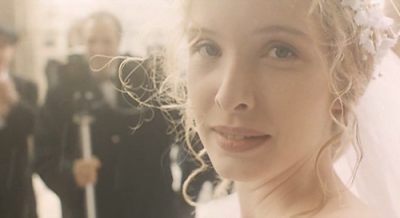Kieslowski's treatise on equality, heavy on symbolism and humor
A Potpourri of Vestiges Review
Featured in IMDb Critic Reviews
 |
| Three Colors: White (1994) - By Krzysztof Kieslowski |
Our Rating: 9.5
IMDb Ratings: 7.9
Genre: Drama | Music | Mystery
Cast: Zbigniew Zamachowski, Julie Delpy, Janusz Gajos
Country: France | Poland | Switzerland
Language: Polish | French | English | Russian
Language: Polish | French | English | Russian
Runtime: 91 min
Color: Color
Summary: Second of a trilogy of films dealing with contemporary French society shows a Polish immigrant who wants to get even with his ex-wife.
Three Colors: White (1994) is the second installment in the late Polish filmmaker Krzysztof Kieslowski’s highly acclaimed “Three Colors” trilogy—the other two being Three Colors: Blue (1993) and Three Colors: Red (1994). The screenplay of the trilogy is co-written by Kieslowski and his longtime collaborator Krzysztof Piesiewicz. The “Three Colors” trilogy is loosely based on the French ideals of liberty, equality and fraternity as represented by the French tricolor. The trilogy is widely considered as Kieslowski’s greatest work along with his “Decalogue”—a ten-episode television series with each of the ten episodes trying to explore and interpret one of the Ten Commandments through the means of a short fictional story. In fact, a very few would disagree that the “Three Colors” trilogy and the “Decalogue” are two of the greatest and most consummate manifestations of human expressions in the whole of cinema.
 |
| Julie Delpy as Dominique in Krzysztof Kieslowski's Three Colors: White |
 |
| Zbigniew Zamachowski as Karol Karol |
 |
| A Still from Three Colors: White |
 |
| A Still from Three Colors: White |
 |
| Zbigniew Zamachowski in Three Colors: White |
 |
| Dominique and Karol share an intimate moment |
Readers, please feel free to share your opinion by leaving your comments. As always your feedback is highly appreciated!
Three Colors: White (1994) Trailer
People who liked this also liked...


That poster is haunting and funny at the same time. Good review Murtaza.
ReplyDeleteThanks for sharing your valuable thoughts!!! :-)
ReplyDelete